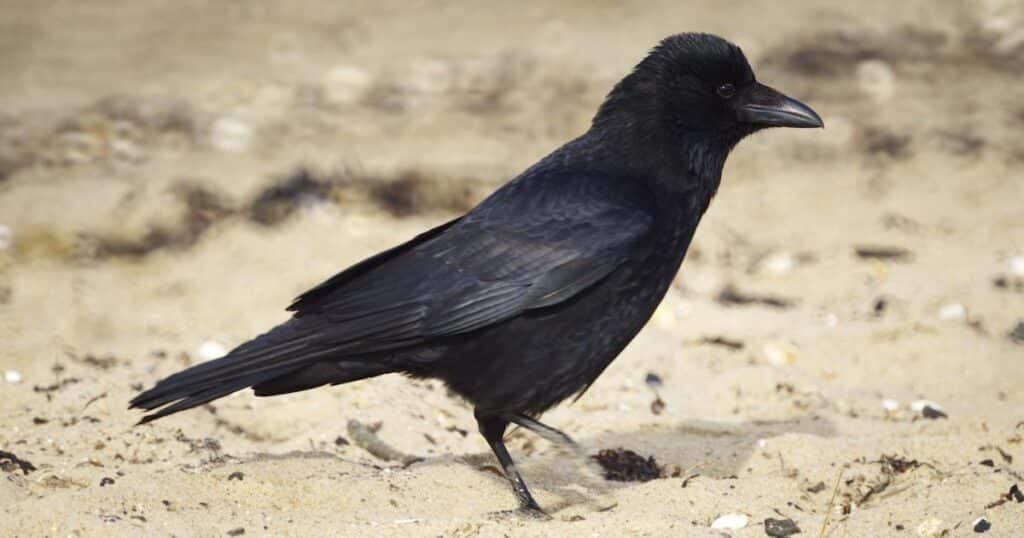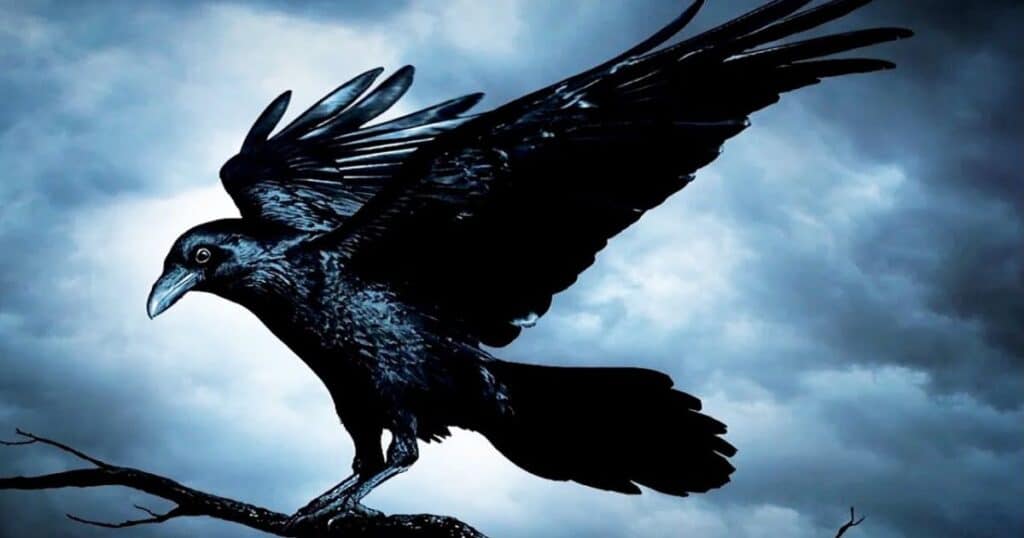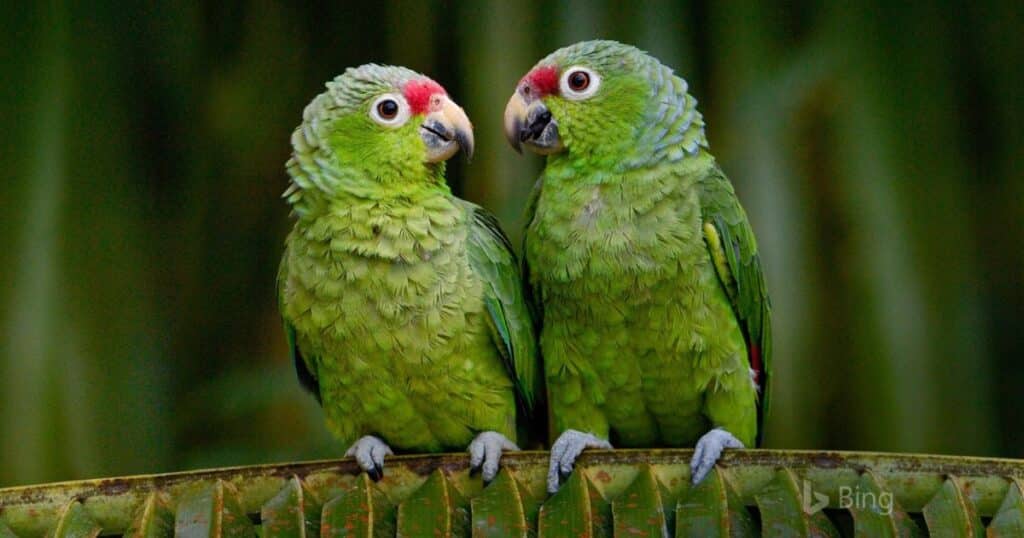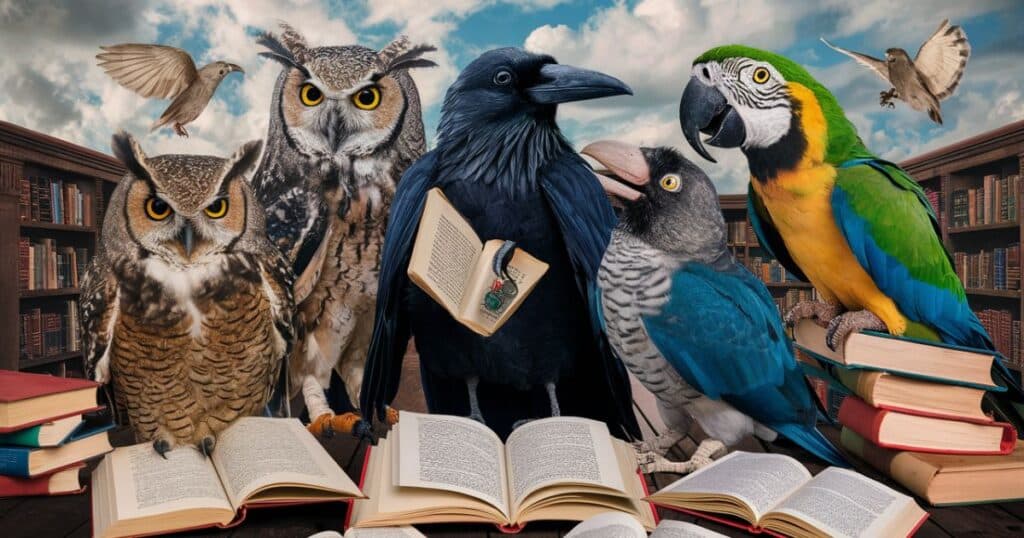Have you ever watched a crow craftily solve a complex puzzle to get food? Or been amused by a parrot’s impressive ability to mimic speech? While birds may seem simple from the outside, many species possess remarkable cognitive abilities that defy our expectations.
In this comprehensive guide, we’ll unravel the fascinating world of avian intelligence and explore which feathered creatures truly stand out as the “smartest birds.”
Understanding Bird Intelligence
Defining Avian Intelligence
When we think of intelligence, traits like problem-solving, memory, communication, and behavioral flexibility often come to mind. But how do we define and measure these capabilities in birds? Avian intelligence refers to the advanced cognitive skills that allow birds to adapt, learn, and thrive in their environments.
Scientists look for markers such as:
- Problem-solving: The ability to overcome obstacles and find creative solutions.
- Memory: Recalling and applying information over time.
- Communication: Using vocalizations, body language, and other signals to convey information.
- Social Intelligence: Understanding and navigating complex social dynamics.
- Tool Use: Crafting and using objects as tools to achieve goals.
By studying these markers, researchers gain insights into the remarkable mental capacities of our feathered friends.
MORE POST: The Winged Ambassadors Of Spring: What Bird Symbolizes The Arrival Of The Spring Season?
Bird Brain Anatomy and Cognition
Despite having brains that are relatively small compared to mammals, birds possess highly developed and densely packed neural pathways. Their brains have evolved specialized regions dedicated to cognitive functions like spatial awareness, memory, and problem-solving.
For example, the avian hippocampus (responsible for spatial memory and navigation) is larger and more intricate than its mammalian counterpart. This adaptation likely aids birds’ impressive ability to recall locations, navigate long distances, and even create mental maps of their environments.
Assessing Intelligence Through Tests
To investigate avian intelligence, scientists design clever experiments that challenge birds’ cognitive abilities. These tests often involve problems that require innovative solutions, such as obtaining a food reward from a complex puzzle or using tools to retrieve an out-of-reach object.
One famous example is the Aesop’s fable experiment, where birds must drop objects into a tube to raise the water level and obtain a floating reward. Researchers carefully observe and measure the birds’ behaviors, noting their problem-solving strategies, persistence, and ability to understand cause-and-effect relationships.
Corvidae: The Brainy Birds

Insight into Corvid Behavior
The corvid family, which includes crows, ravens, jays, and magpies, has long been recognized for its exceptional intelligence. In the wild, these birds display fascinating behaviors that hint at their cognitive prowess:
- Crows have been observed using tools, such as bending a wire to create a hook for retrieving food from hard-to-reach places.
- Ravens engage in complex social interactions, forming intricate hierarchies and even demonstrating deceptive behaviors to protect their resources.
- Jays are well-known for their ability to cache (hide) food in various locations and remember where they stored it months later.
These observations suggest that corvids possess advanced problem-solving, memory, and social skills, setting the stage for further scientific investigation.
Specific Studies on Corvid Intelligence
Numerous research studies have delved into the remarkable cognitive abilities of corvids, yielding fascinating insights:
- Object Permanence: In a study published in the journal Animal Behaviour, researchers found that crows possess a sophisticated understanding of object permanence – the ability to track the existence and movement of objects, even when they’re temporarily out of sight. This skill is often considered a hallmark of intelligence and is typically absent in most birds.
- Tool Use and Crafting: A famous study by the University of Cambridge demonstrated that crows can not only use tools but also craft them for specific purposes. The birds were observed bending pieces of wire into hooks to retrieve a food bucket from a tall vertical pipe – a remarkable display of problem-solving and tool-making abilities.
- Numerical Competence: Research published in Science revealed that crows possess an impressive grasp of numerical concepts. The birds could not only discriminate between different quantities but also perform basic arithmetic operations, such as adding and subtracting small numbers of items.
These groundbreaking studies have solidified the corvid family’s reputation as true “feathered apes,” showcasing cognitive abilities once thought to be exclusive to primates.
Social Clever Crows
Among corvids, crows stand out for their exceptional social intelligence. These highly social birds have been observed engaging in behaviors that suggest a sophisticated understanding of social dynamics:
- Facial Recognition: Crows can recognize and remember individual human faces, even holding “grudges” against those who have threatened or harmed them in the past.
- “Funerals”: When a crow encounters the body of a deceased member of their species, they often gather around and make loud, repetitive calls. This behavior, dubbed a “funeral,” may serve as a way to learn about potential threats or reinforce social bonds.
- Cooperative Problem-Solving: Crows have been observed working together to achieve goals, such as pulling on opposite ends of a string to retrieve food or taking turns to distract and retrieve resources from a rival group.
These intricate social behaviors demonstrate the remarkable cognitive abilities that allow crows to navigate complex social landscapes and cooperate effectively within their communities.
Crows: Masters of Ingenuity
Crows are undoubtedly among the most intelligent birds on the planet, exhibiting a level of ingenuity that rivals that of some primates. Their problem-solving prowess and ability to craft and use tools have been extensively documented:
Tool Use and Crafting: In a famous study by the University of Oxford, crows were presented with a challenge: retrieving a small bucket of food from a tall vertical pipe. The birds quickly realized they could bend a straight piece of wire into a hook to pull up the bucket, showcasing their remarkable ability to craft and use tools.
Creative Problem-Solving: Crows have been observed using innovative methods to obtain food or achieve their goals. For example, they may drop nuts onto busy roads, allowing cars to crack them open, and then retrieve the contents once it’s safe. They’ve also been known to intentionally start fires to flush out prey or create a distraction.
Memory and Spatial Awareness: Crows possess an exceptional memory and spatial awareness, allowing them to remember the locations of thousands of food caches months after hiding them. They can also create mental maps of their environments, navigating complex urban landscapes with ease.
These remarkable abilities have earned crows a reputation as true “feathered geniuses,” capable of solving problems and adapting to their environments in ways that often defy our expectations.
Ravens: Masters of Deception

While closely related to crows, ravens have evolved their own unique set of cognitive abilities, particularly when it comes to deception and cunning. These intelligent birds are masters of manipulation, using their wits to outsmart rivals and secure resources:
- Hoarding and Deception: Ravens are known to hoard and cache food items, but they also employ deceptive tactics to protect their stashes. They may re-cache food in new locations or engage in elaborate distraction behaviors to throw others off the scent of their hidden treasures.
- Social Hierarchies: Within complex raven societies, intelligence plays a crucial role in establishing and maintaining social hierarchies. Dominant ravens use their cognitive abilities to manipulate others, secure prime resources, and maintain their status within the group.
- Problem-Solving: Ravens are adept problem-solvers, capable of devising creative solutions to access food or overcome obstacles. In one study, ravens figured out how to use a series of tools in the correct sequence to retrieve a reward, showcasing their ability to plan ahead and reason through multi-step processes.
These cunning behaviors highlight the remarkable cognitive complexity of ravens, allowing them to navigate their social and physical environments with a level of intelligence that rivals that of many primates.
Parrot Family: Masters of Mimicry
While corvids are often hailed as the “brainy birds,” the parrot family (which includes macaws, cockatoos, and parakeets) has also garnered significant attention for their impressive cognitive abilities, particularly when it comes to communication and mimicry.
Parrot Communication Skills

Parrots are well-known for their uncanny ability to mimic human speech, but their vocal talents go far beyond mere imitation. Many species can engage in two-way communication, understanding and responding to human speech with context-appropriate vocalizations.
For example, African grey parrots have been observed using specific sounds and phrases to convey their desires, such as requesting food or asking for objects to be moved. This level of comprehension and communication suggests a sophisticated understanding of language and the ability to associate words with meanings and intentions.
Cognitive Talents of Parrots
In addition to their impressive vocal abilities, parrots have demonstrated a range of cognitive talents that showcase their intelligence:
- Problem-Solving: Parrots can solve complex puzzles, manipulate objects, and use tools to achieve their goals. In
African Grey Parrot: The Chatterbox Savant
Unexpected Candidate
Among the diverse world of parrots, one species stands out as a true cognitive marvel: the African grey parrot. These unassuming birds, native to equatorial Africa, have captured the attention of researchers and bird enthusiasts alike with their exceptional language abilities and problem-solving skills.
While parrots are generally known for their talent at mimicking human speech, the African grey takes this skill to an entirely new level. These birds can not only mimic words and phrases with remarkable clarity but also appear to comprehend and use language in a meaningful way.
Lessons to Learn
The intelligence of the African grey parrot has profound implications for our understanding of avian cognition and the nature of intelligence itself. Their ability to grasp abstract concepts, communicate intentionally, and solve complex problems challenges our preconceived notions of what constitutes “intelligence” and which species possess it.
One famous example is Alex, an African grey parrot trained by animal psychologist Irene Pepperberg. Alex could not only mimic human speech but also demonstrated an understanding of concepts like colors, shapes, sizes, and quantities. He could even grasp abstract ideas like “same” and “different,” and he could combine words to convey novel phrases he had never been taught, suggesting a level of cognitive processing akin to human language abilities.
Birds in the Quran: The Hoopoe
The exceptional intelligence of birds is not just a subject of scientific fascination but also holds cultural and religious significance. In the Quran, the holy book of Islam, the story of the hoopoe bird is a powerful example of avian wisdom and insight.
According to the Quran, the hoopoe serves as a messenger for the Prophet Solomon, guiding him to the land of Sheba and providing valuable information about the kingdom and its ruler, the Queen of Sheba. The hoopoe’s ability to convey complex information and navigate unfamiliar territories is portrayed as a sign of its intelligence and divine guidance.
This religious perspective highlights the deep-rooted appreciation for avian intelligence across cultures and underscores the importance of understanding and respecting these remarkable creatures.
Kea: The Mischievous Maestro
While not as widely recognized as corvids or parrots, the kea parrot of New Zealand deserves a spotlight for its remarkable intelligence and mischievous behavior. These curious and playful birds have been observed engaging in a wide range of intelligent activities:
- Problem-Solving: Keas are adept at solving complex puzzles and using tools to obtain food or access new areas. They have been known to dismantle human-made structures, showcasing their ability to manipulate objects and understand cause-and-effect relationships.
- Social Intelligence: Keas live in tight-knit social groups and exhibit complex social behaviors, including play, cooperation, and even teaching behaviors where older birds pass down knowledge to younger ones.
- Boldness and Curiosity: Perhaps their most defining trait, keas are incredibly bold and curious, often approaching and interacting with humans in ways that can be both entertaining and mischievous. Their inquisitive nature drives them to explore and manipulate their environments, leading to some rather comical encounters.
The kea’s combination of intelligence, social complexity, and mischievous personality has made it a beloved icon in New Zealand and a fascinating subject of study for researchers interested in avian cognition.
Brainy Birds: America’s Smartest Bird Species
While many of the world’s most intelligent birds hail from distant continents, North America is home to several remarkable avian species that showcase impressive cognitive abilities:
- American Crow: As a member of the highly intelligent corvid family, the American crow is a master problem-solver and tool user. These birds have been observed using tools, engaging in complex social behaviors, and even recognizing individual human faces.
- Blue Jay: Native to eastern North America, blue jays are known for their intelligence, resourcefulness, and ability to mimic the calls of other birds and animals. They have been observed using tools, engaging in cooperative hunting, and exhibiting sophisticated social behaviors.
- Common Raven: Found throughout much of North America, ravens are closely related to crows and share many of the same cognitive abilities. They are masters of deception, problem-solving, and social intelligence, using their wits to navigate complex social hierarchies and outwit rivals.
- Steller’s Jay: This western North American species is known for its impressive memory and caching abilities. Steller’s jays can remember the locations of thousands of food caches and have been observed using deceptive tactics to protect their stashes from potential thieves.
- Clark’s Nutcracker:
- As mentioned earlier, these remarkable birds have an exceptional spatial memory, allowing them to recall the locations of tens of thousands of seed caches they bury each year, showcasing their impressive cognitive prowess.

While often overshadowed by their more exotic counterparts, these North American birds serve as a reminder that intelligence can be found in our own backyards, and they deserve recognition for their remarkable cognitive abilities.
Smartest Birds: Key Abilities
While each species of “brainy bird” possesses its own unique set of cognitive talents, there are several key abilities that seem to be hallmarks of avian intelligence:
Planning and Memorizing
Many of the smartest birds have demonstrated an impressive ability to plan ahead and remember vast amounts of information. Crows can recall the locations of thousands of food caches, while nutcrackers can navigate vast distances to retrieve seeds they buried months earlier. This long-term memory and spatial awareness are crucial for survival and suggest a level of cognitive complexity that rivals that of many mammals.
Working Together
Social intelligence is another hallmark of avian smarts. Highly intelligent birds like crows, ravens, and parrots often live in complex social groups and exhibit cooperative behaviors. They may work together to solve problems, share resources, or engage in coordinated hunting or foraging tactics. This level of social organization and cooperation requires a deep understanding of social dynamics
Recognizing Faces
One of the most remarkable abilities displayed by certain intelligent birds is facial recognition. Crows, in particular, have been observed recognizing and remembering individual human faces, even holding “grudges” against those who have threatened or harmed them in the past. This level of visual memory and social cognition is truly astonishing and highlights the complex cognitive processes at play in the avian brain.
Mimics
While mimicry is often associated with parrots and their uncanny ability to mimic human speech, many other intelligent bird species have also demonstrated impressive vocal mimicry skills. Lyrebirds, for example, can mimic not only the calls of other birds but also a wide range of environmental sounds, from chainsaws to camera shutters. This talent suggests a level of auditory perception and vocal control that goes beyond simple imitation.
Solving Problems
Perhaps the most defining trait of intelligent birds is their ability to solve complex problems and devise creative solutions. From crows crafting tools to parrots unlocking intricate puzzles, these birds have consistently demonstrated an ability to analyze situations, explore alternative strategies, and overcome obstacles in innovative ways. This problem-solving prowess is a clear indicator of their cognitive flexibility and adaptability.
Using Tools
Tool use is often considered a hallmark of intelligence, as it requires an understanding of cause-and-effect relationships, object manipulation, and problem-solving skills. Many intelligent bird species, including crows, ravens, and some parrot species, have been observed using and even crafting tools to achieve their goals. This ability to modify and utilize objects in novel ways is a testament to their cognitive complexity and ingenuity.
By understanding and appreciating these key abilities, we can gain a deeper appreciation for the remarkable intelligence of birds and the evolutionary forces that have shaped their cognitive prowess.
Conclusion
In conclusion, the world of avian intelligence is vast, fascinating, and constantly evolving. From the cunning crows and deceptive ravens to the chatty African greys and mischievous keas, these feathered creatures have continuously challenged our preconceived notions of intelligence and pushed the boundaries of what we thought possible.
As we continue to study and unravel the mysteries of avian cognition, we may discover even more remarkable abilities and insights that could reshape our understanding of intelligence itself. Perhaps most importantly, acknowledging and respecting the intelligence of these remarkable creatures will inspire us to protect and preserve the rich biodiversity that has given rise to such incredible evolutionary marvels.
Whether you’re a bird enthusiast, a cognitive scientist, or simply someone who appreciates the wonders of nature, the exploration of avian intelligence is a captivating journey that promises to reveal the depths of these creatures’ mental capabilities and the profound complexities of the natural world.
ALSO READ THIS POST: A Bird Just Shat On My Sister’s Face: Decoding Nature’s Unexpected Surprise
FAQ’s
What bird has the highest IQ?
While IQ tests are designed for humans, research suggests crows, ravens, and parrots like African greys possess exceptional intelligence among birds. However, directly comparing avian and human intelligence is challenging due to different cognitive specializations.
Who is the smartest birds in the world?
Based on studies of problem-solving, tool use, and social intelligence, some of the smartest birds are crows, ravens, parrots (especially African greys), jays, magpies, and cockatoos. Their remarkable cognitive abilities rival those of great apes.
What is smarter, a crow or a raven?
Both crows and ravens are highly intelligent corvids, but research indicates ravens may have an edge in problem-solving and deceptive abilities. Crows excel in tool use and social intelligence. Overall, they possess comparable levels of remarkable intelligence.
What’s the smartest bird you can own?
Among birds kept as pets, parrots like African greys, macaws, cockatoos, and amazons are considered the most intelligent due to their advanced communication, problem-solving, and social skills. With proper care and training, their intelligence can be truly astounding.

Davin Connor is an experienced author with 3 years in pets writing. Known for concise, informative content, he shares expertise on pet care, behavior, and health through his engaging articles.






